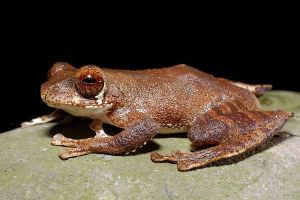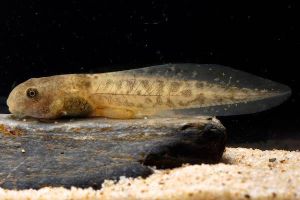
Frogs of Borneo

Frogs of Borneo

Frogs of Borneo

Frogs of Borneo

Frogs of Borneo

Frogs of Borneo

Frogs of Borneo

Frogs of Borneo

Frogs of Borneo

Frogs of Borneo

Frogs of Borneo
malkmusi
Malkmus’ Tree Frog
Leptomantis malkmusi is a medium-size tree frog of hilly to montane rainforest. It has been reported from Sabah, particularly Gunung Kinabalu at 750–1000 m elevation. Snout-vent length is 27–36 mm, females are larger than males.
The original diagnosis lists these characters (modified from Dehling 2015): The head is wider than long and wider than the body; the snout is obtuse, rounded in dorsal view, sub-truncate in profile, slightly projecting beyond mandible. There is a row of small white tubercles but no dermal flap along forearm. Finger III is webbed to proximal subarticular tubercle on the preaxial side and to the distal subarticular tubercle on the postaxial side. Finger IV is webbed to distal subarticular tubercle. Toe IV is webbed to penultimate subarticular tubercle on the preaxial side and to distal subarticular tubercle on the postaxial side. The heel bears a pointed dermal projection. The skin is smooth. Supratympanic and supracloacal folds are weakly developed. There is a large number of small white tubercles in the infraanal region and on ventral surface of thighs. The lateral faces of legs and groin region bright yellow in life. Iris ruby, lightened to yellow marginally.
This species can be seen during the night sitting on overhanging vegetation at streams. It prefers relatively rocky streams with clear water.
The tadpoles presented here is to our knowledge the only tadpole that has been documented of this species so far. Although we barcoded the DNA of this specimen, additional work is needed to link the tadpole unequivocally to the adults (original description of the species was published without DNA account). However, our preliminary analysis make us confident enough to present the tadpole here. The specimens was collected in a stream together with Huia cavitympanum and Leptomantis angulirostris tadpoles in a rocky river. All three tadpole species adhere to the rock surfaces with their sucker structures, however, L. malkmusi tadpoles seem to prefer low velocity sections in the water.

